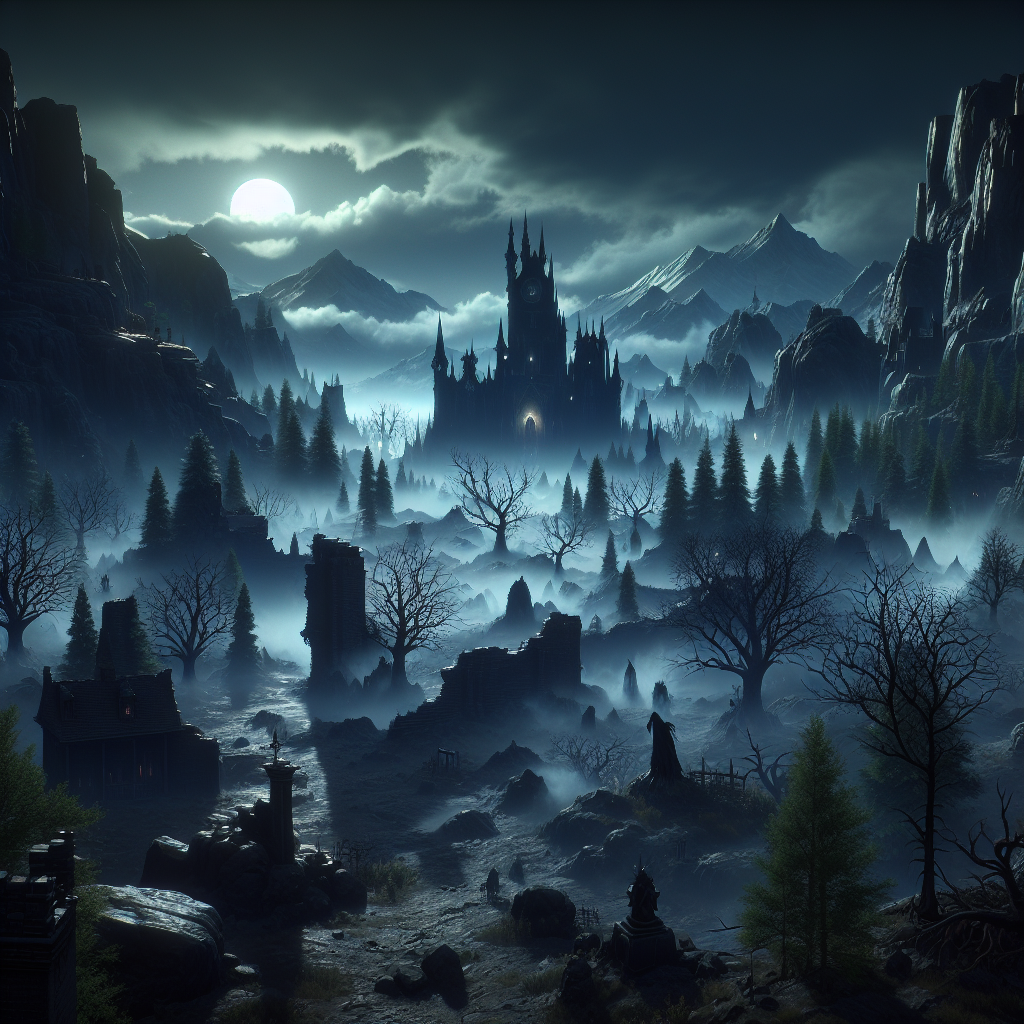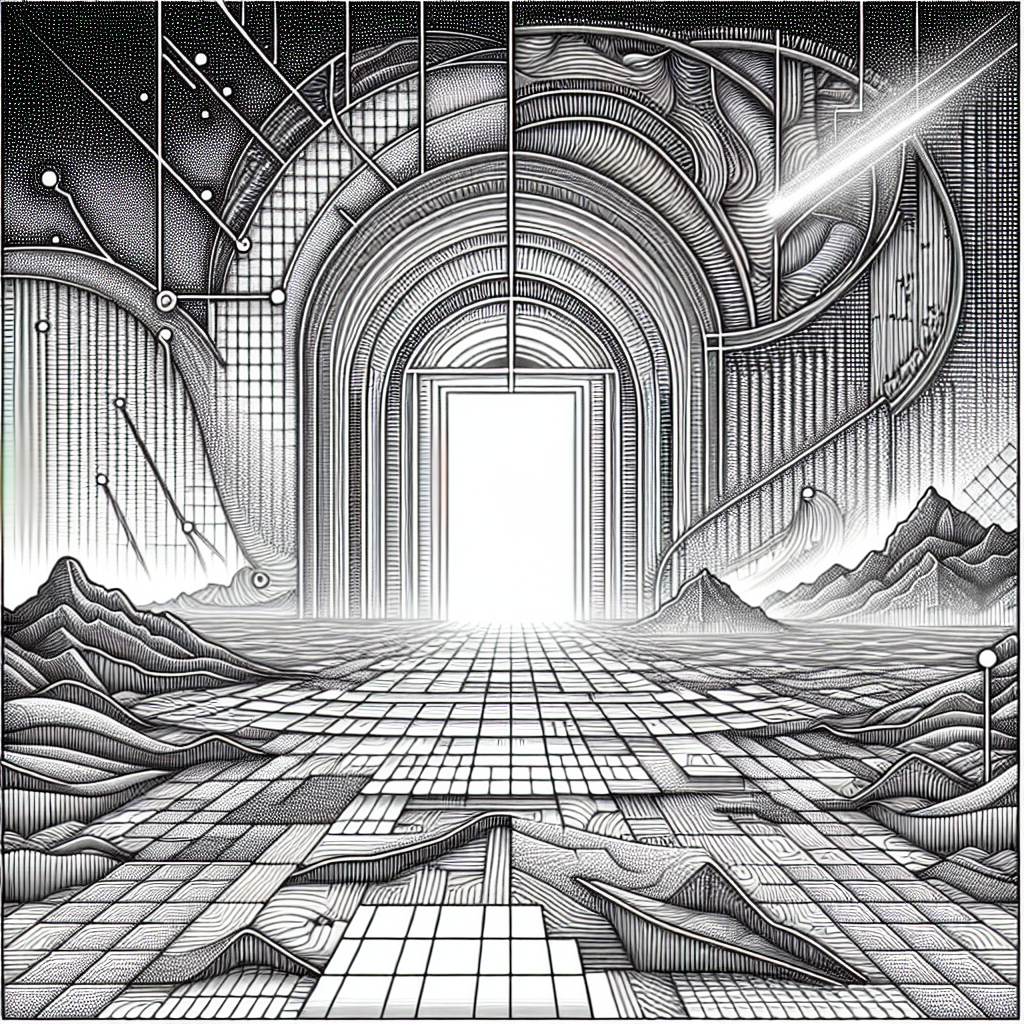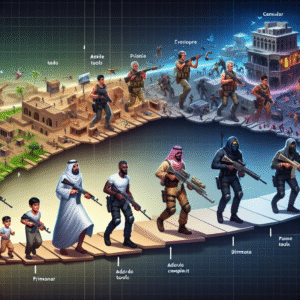Exploring the Dark Mystique of Diablo IV’s New Open World Environment
Exploring the dark mystique of Diablo IV’s new open world environment reveals an intricate and immersive design crafted to entice both longtime fans and newcomers. Blizzard Entertainment has masterfully infused the beloved series with fresh dynamics while respecting the core elements that have always defined Diablo. The open-world design stands at the forefront of these innovations, providing a vast, interconnected realm filled with dynamic elements, narrative depth, and a hauntingly beautiful aesthetic.
Sanctuary, the primary setting in Diablo IV, has undergone profound transformations since we last encountered it. The world, now more expansive and interconnected, allows players to transition seamlessly between diverse regions, each with its unique climate, culture, and challenges. These regions include the Scosglen Coast, the Dry Steppes, the Hawezar Swamp, the Fractured Peaks, and the forgotten city of Kyovashad. Each area is characterized by distinct visuals and atmospheric details that contribute to the grim ambiance that fans have come to expect.
In the Scosglen Coast, players will navigate lush forests and untamed coastlines, dealing with incessant rainstorms and treacherous terrain that test their strategic prowess. The lush visuals, underscored by the sound of crashing waves and distant thunder, create an ever-present sense of danger. This region is not merely a backdrop but a living, breathing environment where the weather and time of day can affect gameplay, making exploration unpredictable.
Transitioning to the Dry Steppes, players encounter a harsh, arid expanse marked by rolling dunes and rocky outcrops. The landscape reflects the desolation and brutality of its inhabitants, who have adapted to survive in such a merciless climate. The open-world mechanics shine here as players traverse the land, discovering hidden secrets and treacherous foes that require tactical adaptation and resilience. The stark contrast of light and shadow in this region emphasizes the series’ dark tone, enveloping players in a perpetual struggle against both the elements and the demonic forces lurking within.
The Hawezar Swamp presents a dramatically different experience. This region, suffused with murky waters and dense fog, conceals myriad threats beneath its surface. A sense of foreboding pervades the area, enhanced by twisted tree roots and the distant glow of will-o’-the-wisps guiding—or misleading—unsuspecting wanderers. Players must adapt to the unnerving environment, where visibility is limited, and the pervasive dampness can erode both morale and physical strength. The swampland’s eerie silence is occasionally broken by the guttural calls of unseen creatures, reinforcing the sense of isolation and dread.
The watchful peaks of the Fractured Peaks serve as a harbinger of change, introducing vertical exploration elements that expand upon the series’ traditional gameplay. Snow-covered mountains and treacherous ice paths require careful navigation as players ascend to hidden battlements and forgotten monasteries, where the chilling wind is a constant reminder of the power and majesty of nature. These peaks challenge players with dynamic weather conditions, forcing them to contend with sudden avalanches or blinding blizzards that test their strategic acumen and survival instincts.
Kyovashad, an ancient city shrouded in myth and decay, offers a stark contrast to the wilderness of the surrounding regions. The architectural remnants of its fallen glory invite exploration, with labyrinthine streets and shadowed corners harboring both treasure and danger. As players delve into the city’s depths, they unravel narrative threads woven into the fabric of the environment, discovering stories of lost civilizations and the eternal battle between light and dark. Kyovashad’s design integrates seamlessly into Diablo IV’s open-world ethos, blurring the line between civilization and chaos.
Throughout Sanctuary, dynamic events and intelligent AI provide constant engagement beyond the scripted sequences, ensuring that no two journeys are identical. World events, such as demonic invasions or elite monster spawns, organically arise, compelling players to react and adapt. These encounters are not only tests of combat skill but opportunities for deeper immersion in the evolving narrative landscape.
Blizzard has ensured that Diablo IV’s open world is not just a passive backdrop but an active participant that influences player actions. Emergent gameplay is emphasized through meaningful choices that affect the world state, from deciding whether to aid besieged settlements to making moral choices that could shift alliances and affect the storyline. Player-driven narratives complement the overarching plot, making each decision carry weight and consequence.
The open-world design is further enriched by the presence of mounts, facilitating swift travel across the expansive landscapes. Players have the freedom to explore at their own pace, discovering hidden caches, secret dungeons, and lore-rich environments. The ability to traverse these environments on horseback imbues a sense of agency and power, allowing players to carve their unique path through the ever-changing world of Diablo IV.
The visual and auditory elements combine seamlessly to enhance the game’s haunting allure. Diablo IV’s graphics engine brings an unprecedented level of detail, capturing every nuance of texture, light, and atmosphere. High-quality sound design envelops players in a 360-degree auditory experience, amplifying the tension of exploration and combat. From the rustle of leaves in the Scosglen forests to the ominous silence of a Hawezar cavern, the soundscape reinforces the emotive impact of each environment.
Moreover, the commitment to innovation extends to cooperative play and multiplayer functionality within the open world. Players can team up with others globally, forming alliances that aid in overcoming world bosses or tackling challenging dungeons. This cooperative element is fluid and non-disruptive, allowing players to join or part ways without interrupting the personal narrative arc. Strategic collaboration is encouraged through the design of encounters that reward combined efforts, enhancing both the social and competitive layers of gameplay.
Blizzard’s meticulous world-building is evident in the cultural and historical nuances interwoven throughout each region. Lore-laden codices, scattered relics, and interactive NPCs flesh out the world, inviting players to delve deeper into Sanctuary’s rich tapestry. These elements celebrate Diablo’s storied history while pushing the narrative boundaries into new territories, creating a comprehensive experience that bridges single-player and multiplayer experiences with ease.
The seamless blend of technology and artistry in Diablo IV’s open world not only redefines the series but sets a precedent for future action RPGs. Blizzard Entertainment has embraced technical innovations, integrating ray tracing, dynamic lighting, and machine learning to enhance realism and immersion. These cutting-edge technologies accentuate the dark fantasy theme, drawing players deeper into the depths of Sanctuary with each harrowing step. The outcome is a living, breathing world that is both terrifyingly beautiful and captivatingly immersive.
In the dark mystique of Diablo IV’s open world, players are not mere participants but integral elements of the unfolding saga. The world is a crucible of discovery, challenge, and triumph, inviting exploration at every turn. As they traverse this shadowed realm, players forge a unique path, leaving an indelible mark on the annals of gaming lore. Diablo IV stands as a testament to the enduring allure of darkness and the unquenchable human spirit that dares to venture within it.













Post Comment